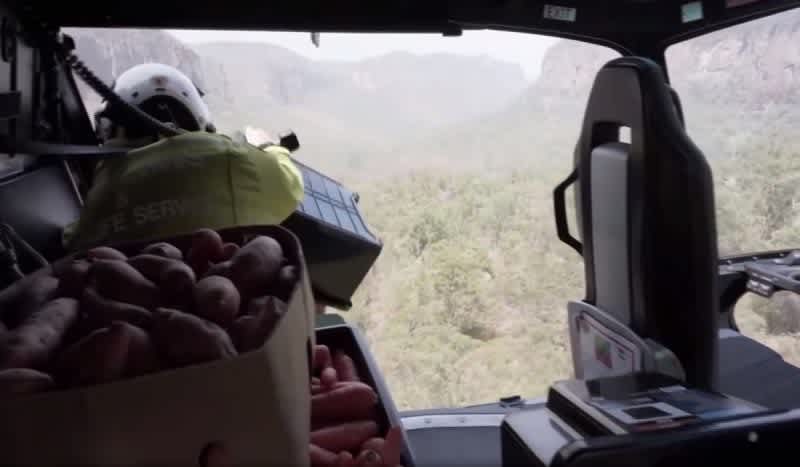Operation Rock Wallaby: Australia Drops Food and Water from Helicopters for Wildlife Escaping Bushfires
OutdoorHub Reporters 01.13.20

Heaps of carrots and sweet potatoes are being dropped from helicopters by the New South Wales National Parks and Wildlife Service to help assist wildlife affected by the Australian bushfires. According to the department, these aerial food drops – dubbed “Operation Rock Wallaby” – are part of a major post-fire wildlife recovery effort taking place across the region.
In the last week, nearly 1000 kilograms of sweet potato and carrot have been delivered to six different colonies in the Capertee and Wolgan valleys; 1000 kilograms across five sites in Yengo National Park; almost 100 kilograms of food and water in the Kangaroo Valley, with similar drop-offs taking place in Jenolan, Oxley Wild Rivers and Curracubundi national parks.
“The provision of supplementary food is one of the key strategies we are deploying to promote the survival and recovery of endangered species like the Brush-tailed Rock-wallaby,” New South Wales Minister for Energy and Environment Matt Kean said in a statement.
“Initial fire assessments indicate the habitat of several important Brush-tailed Rock-wallaby populations was burnt in the recent bushfires. The wallabies typically survive the fire itself, but are then left stranded with limited natural food as the fire takes out the vegetation around their rocky habitat.”
With the wallabies already under stress due to an ongoing drought, this makes survival that much more challenging for these little critters.
Kean added in the statement how this is the most widespread aerial food drop ever performed for Brush-tailed Rock-wallabies, and he remains hopeful the colonies will eventually recover.
“At this stage, we expect to continue providing supplementary food to rock-wallaby populations until sufficient natural food resources and water become available again in the landscape, during post-fire recovery.”
Brush-tailed Rock-wallabies
Like kangaroos, these animals are marsupials who “live on rocky escarpments, granite outcrops and cliffs,” according to Australia’s Department of Environment and Energy website. Of the 15 species residing in Australia, most have disappeared and are now considered “threatened,” the website says.
Nearly half a billion animals have been impacted by the recent bushfires in NSW alone, with millions potentially dead, according to ecologists at the University of Sydney. That catastrophic number includes birds, reptiles, and mammals, excepts bats. It also excludes insects and frogs, so the actual true number is likely far greater.
How to Help
If you’re looking for ways you can get involved, Adam Greentree shared the following post on his Instagram account with links to Australia Wildfire Fund where 100% of your donation will go directly to where it is needed:

